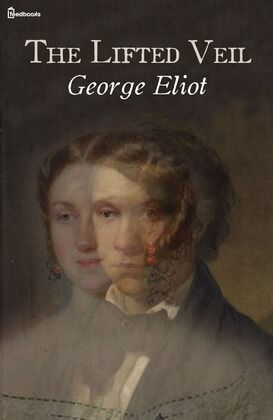Trauma
The Double Mind in Eliot’s "The Lifted Veil"
Part 1: A literary image of dissociation.
Posted May 15, 2022 Reviewed by Gary Drevitch
Key points
- The gothic trope allows writers to explore and present real psychological concepts through the supernatural.
- George Eliot's "The Lifted Veil" presents an early literary image of double consciousness and dissociation.
- Written at a time when scientists focused on dissociation as a result of brain hemisphere disunity, Eliot's model of dissociation is notable.

With its plot fueled by a mysterious villain, a blood transfusion revivification experiment, unspoken voices, and clairvoyant visions in a late-Victorian country estate, The Lifted Veil (1859) is George Eliot’s most gothic, non-realist text. Its gothic horror is up there with Shelley’s Frankenstein (1818, 1831), Stevenson’s The Strange Case of Dr. Jekyll and Mr. Hyde (1886), and Stoker’s Dracula (1897). But the supernatural turn aids rather than inhibits Eliot’s presentation of dissociation. The novella’s language of double consciousness, intermittent delirium, out-of-body experiences, and living under the grasp of invisible and unknown forces introduces language that we would understand today through the language of dissociation and trauma.
Latimer’s Double Consciousness and Eliot’s Model of the Mind
Latimer’s experience of visions and voices are transient but acute and intrusive mental and physical states that suggest a doubleness. What begins to emerge is a picture of the mind both engaged and disengaged.
I’ll take a look here at one of his visions: of Prague. Though two distinct sensory details bookend Latimer’s first image of Prague, the “vision” itself shows the mind separating from sensory detail to formulate a new, distinct image. Latimer’s father is called away as he speaks of Prague, leaving the word “Prague” trailing at the end of a half-finished sentence. This is the sensory detail that Latimer’s mind latches onto: “My father was called away before he had finished his sentence, and he left my mind resting on the word Prague, with a strange sense that a new and wondrous scene was breaking upon me."1 He describes the scene “breaking upon [him]” as a wondrous phenomenon that he watches in awe of its approach. What ultimately brings his mind back to his surroundings is “[a] stunning clang of metal [that] suddenly thrilled through [him]”: his servant had dropped fire irons.2 In between these two sensory details, his mind and eyes are not conscious of the objects of his room; rather, they see, in distinct detail, an imagined scene of Prague. Latimer is capable of registering stimuli around him: His body and consciousness register the falling fire-irons. Yet he is also separated, as his mind-eye is elsewhere. Whether it was from the clanging of the metal or this mind-body experience, Latimer tells the reader he is left with a heart “palpitating violently” from the experience.3
His experience at Lichtenberg Palace shows a layered out-of-body experience that involves a more complex interaction between the environment, mind, and delirium. The catalyst in the chain this time appears to be paintings which Latimer confesses “affect [him] so strongly that one or two exhaust all [his] capacity of contemplation.4 Mentally fatigued in this way from the art, Latimer follows his brother and Mr. Filmore “dreamily."5 He describes himself as “half alive” and only “vaguely conscious."6 The scope of Latimer’s consciousness of his surroundings appears lessened, minimized, or constricted. From this state, his third detailed vision appears: He is in his father’s room with Bertha and he feels “helpless before her."7 His return to full consciousness of his environment reads like one awakening from a faint: He “had a sense of [his] eyelids quivering, and the living daylight broke in upon [him]."8 This experience again stirs something within Latimer: The “tumult of mind” makes him “ill for several days” and he “shuddered with horror” as the same scene “recurred constantly, with all its minutiae."9 Eliot illustrates not only a mind capable of layered consciousness but a mind capable of storing and repeating the same material from these layers.
Latimer’s second mental phenomenon involves “diseased participation in other people’s consciousness” or what he also calls “superadded consciousness” and “double consciousness,” and it involves hearing other people’s thoughts in his own mind.10 Latimer describes this hearing of others' thoughts as an “obtrusion on [his] mind of the mental process going forward in first one person, and then another, with whom [he] happened to be in contact”; the thoughts of another “would force themselves on [his] consciousness."11 The text never confirms that Latimer indeed correctly hears the thoughts of others. The voices he hears, like the visions he has, could represent two different states of consciousness. One state of his own consciousnesses could be intruding upon the other. In his visions, one state of consciousness seems to primarily eclipse the other; however, in his hearing of voices, the two states seem to co-exist. At one point, Latimer states that he “lived under forces utterly invisible” and was under the grasp of “unknown forces."12 What, then, is this “other” state of consciousness–the one of visions and voices? What is the unknown force?
Eliot presents her main character, Latimer, as a “neglected” and “unloved” child reeling subconsciously from the traumatic loss of his mother at the age of seven.13 Latimer’s visions, layered and multi-stage dream-like interactions with others, and involuntary splitting of consciousness into different voices offer a theory of dissociation in response to his emotionally traumatic loss of the only love he knew as a child and adult. Centering on Latimer’s emotional shock and trauma–the loss of his mother–as a possible diagnosis for his psychological and physiological phenomena illuminates how attachment styles and parenting, as well as emotional loss, have profound psychological effects.
In Part 2, I explore how The Lifted Veil anticipates Pierre Janet's later theories of dissociation by offering the possibility of emotional shock and psychological trauma as the root of Latimer’s double consciousness.
References
Eliot, George. “The Lifted Veil.” The Lifted Veil, by George Eliot-A Project Gutenberg EBook, 10 Mar. 2022, https://www.gutenberg.org/files/2165/2165-h/2165-h.htm.


